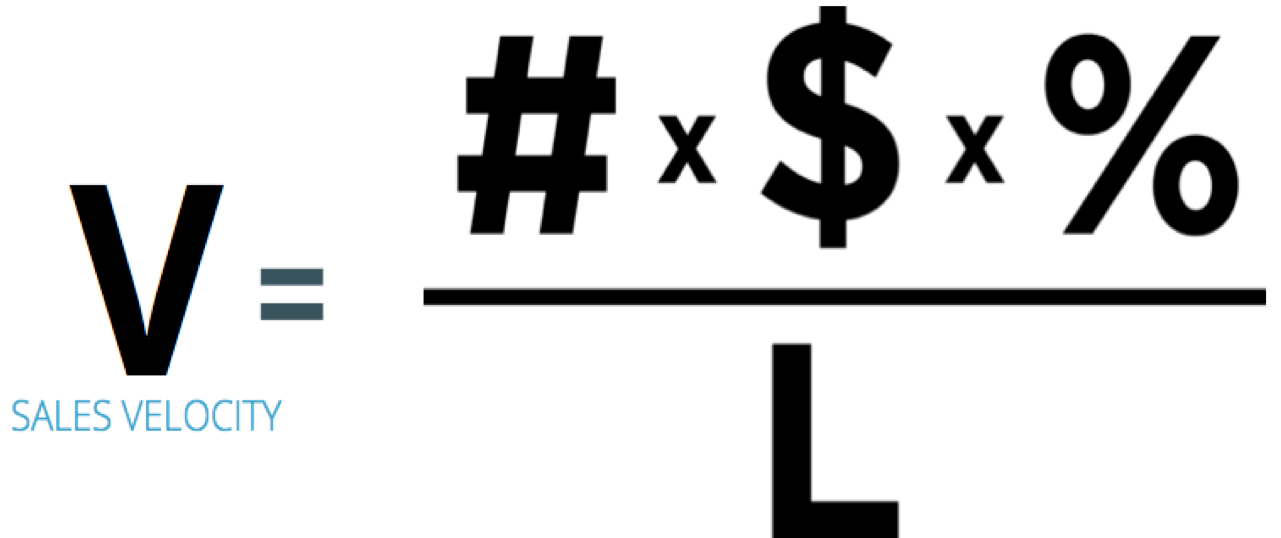One of the critical elements in determining your sales velocity is your Win Rate. If you don’t know how many opportunities to need to pursue to make your number your vision for the future will be cloudy. It is hard to build a sales strategy or know what marketing needs to deliver into the funnel.
It seems pretty simple at first, but calculating your Win Rate is not as straightforward as it might appear. In most cases sellers will think about their Win Rate as the number of wins as a percentage of the number of opportunities that were pursued. But that doesn’t tell the full story.
Let’s say I am working the four deals listed here.
- Deal A: $20,000
- Deal B: $10,000
- Deal C: $40,000
- Deal D: $30,000
Scenario 1:
In this case the results of the four sales cycles are as follows:
- Deal A: $20,000 – WIN
- Deal B: $10,000 – WIN
- Deal C: $40,000 – LOSS
- Deal D: $30,000 – LOSS
I win Deal A and Deal B, and lose Deal C and Deal D. Win two. Lose two. That may be viewed as a 50% Unit Win Rate.
However, when we add the values of the deals, we get a different result. The aggregate of A and B is $30,000, where C and D together to a value of $70,000. On a value basis this translates to Value Win Rateof 30%.
If you look at your pipeline as a predictor of future revenue, using your win rate, as factor of value, then you should consider the difference between Unit Win Rate and Value Win Rate.
Scenario 2:
But while deals of a similar profile generally follow a similar sales cycle, it is rarely the case that a group of opportunities will all start and finish at the same time. Time itself is the added dimension.
In this scenario, only three of the four deals close in the time period we are measuring.
- Deal A: $20,000 – WIN
- Deal B: $10,000 – WIN
- Deal C: $40,000 – OPEN
- Deal D: $30,000 – LOSS
Once again I win Deal A and Deal B, and lose Deal D, but the sale cycle for Deal C has not yet come to a conclusion – or, as is equally likely, I have actually lost Deal C, but have not recorded it as lost, or I just have not realized that I have lost it.
With two wins and one loss, you could argue that the Unit Win Rate is 66%. Following this logic, the Value Win Rate would be 50%, as the total of A and B is $30,000 and the value of D is $30,000.
But what about Deal C? Can I ignore the fact that I have been expending resources on this deal that has yet not be completed? I think not.
Whichever path you take to measure Win Rate, you need to do so with your eyes open, and focus not just on the headline Win Rate number, but what it means to understand the patterns in your business.
At Altify, we have extensively researched how companies measure Win Rate and what this number means to them. Those who use smart software appear to have a much deeper understanding or their win rate and how it plays into their overall sales velocity equation. In addition we have learned that in addition to the variables that play into the two scenarios outlined above, it is very important to be able to measure win rate from different positions in the pipeline. We tend to refer to this as Pipeline Conversion Rate; i.e. the conversion rate from stage N to stage N+1 in the pipeline, and ultimately the conversion rate from stage N to Closed Won. The value of this approach is a deeper understanding of the value required in each stage of the pipeline to ensure you have adequate coverage to enable you to attain future revenue goals.
As with other sales performance initiatives, the key thing about measuring Win Rate is that by first understanding the questions you want to ask, and applying the appropriate tools to help you uncover the metrics that matter, you can get a clear picture of the problems you have to solve. That’s always a good place to start.
If you want to read more of my blogs please subscribe to Think for a Living blog. Follow me on Twitter or connect on LinkedIn. I want you to agree or disagree with me, but most of all: I want you to bring passion to the conversation.
Donal Daly is Executive Chairman of Altify having founded the company in 2005. He is author of numerous books and ebooks including the Amazon #1 Best-sellers Account Planning in Salesforce and Tomorrow | Today: How AI Impacts How We Work, Live, and Think. Altify is Donal’s fifth global business enterprise.

